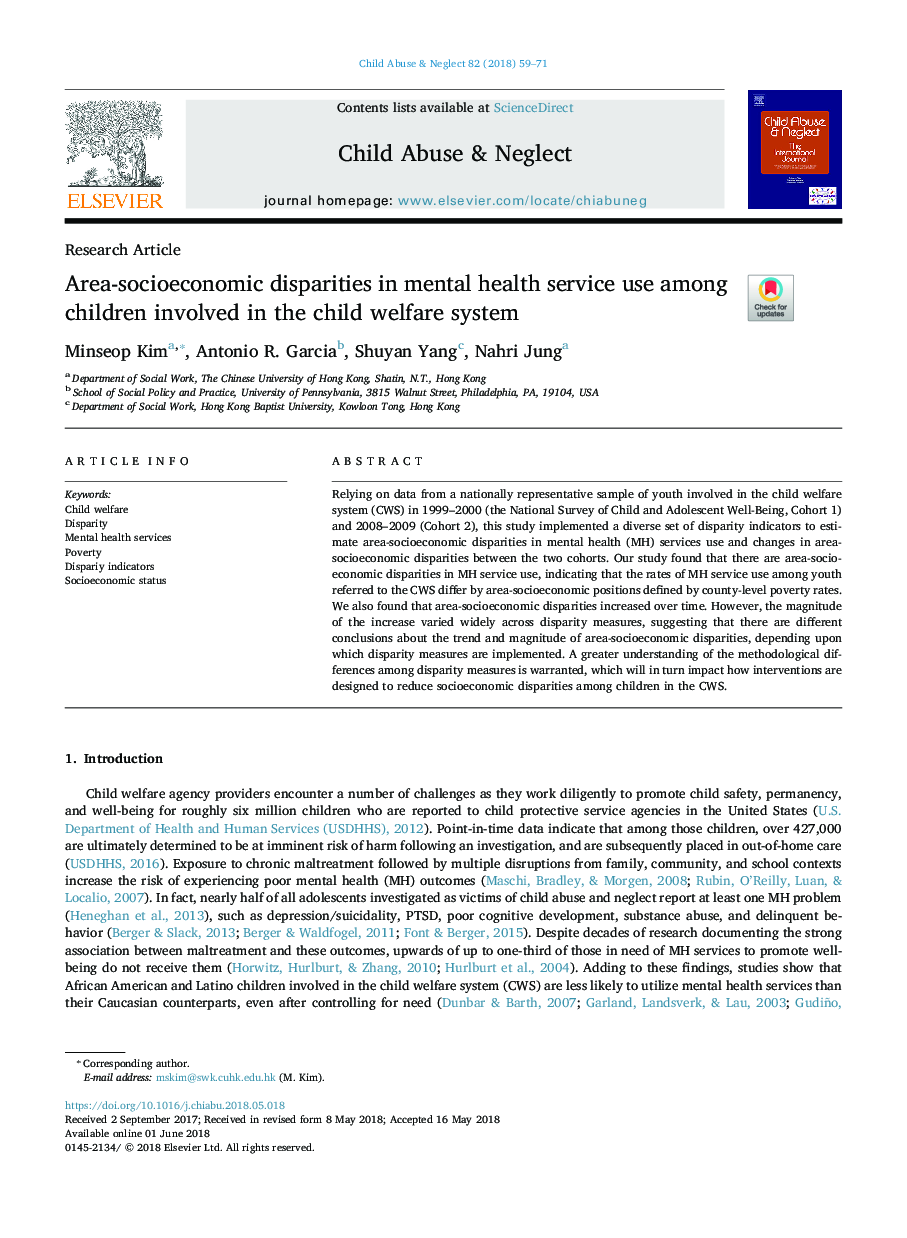| Article ID | Journal | Published Year | Pages | File Type |
|---|---|---|---|---|
| 6831781 | Child Abuse & Neglect | 2018 | 13 Pages |
Abstract
Relying on data from a nationally representative sample of youth involved in the child welfare system (CWS) in 1999-2000 (the National Survey of Child and Adolescent Well-Being, Cohort 1) and 2008-2009 (Cohort 2), this study implemented a diverse set of disparity indicators to estimate area-socioeconomic disparities in mental health (MH) services use and changes in area-socioeconomic disparities between the two cohorts. Our study found that there are area-socioeconomic disparities in MH service use, indicating that the rates of MH service use among youth referred to the CWS differ by area-socioeconomic positions defined by county-level poverty rates. We also found that area-socioeconomic disparities increased over time. However, the magnitude of the increase varied widely across disparity measures, suggesting that there are different conclusions about the trend and magnitude of area-socioeconomic disparities, depending upon which disparity measures are implemented. A greater understanding of the methodological differences among disparity measures is warranted, which will in turn impact how interventions are designed to reduce socioeconomic disparities among children in the CWS.
Related Topics
Health Sciences
Medicine and Dentistry
Perinatology, Pediatrics and Child Health
Authors
Minseop Kim, Antonio R. Garcia, Shuyan Yang, Nahri Jung,
